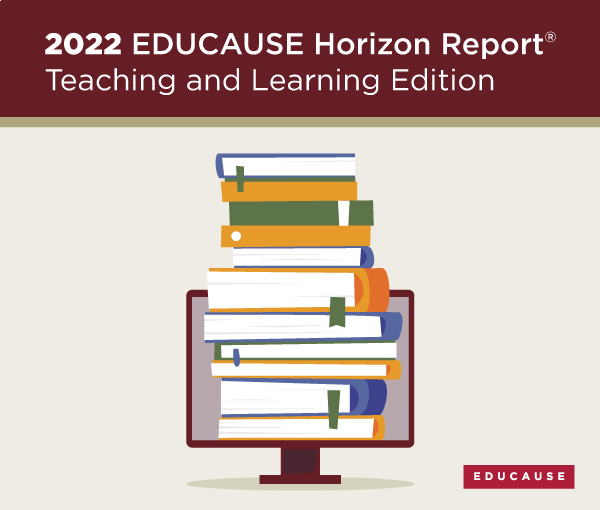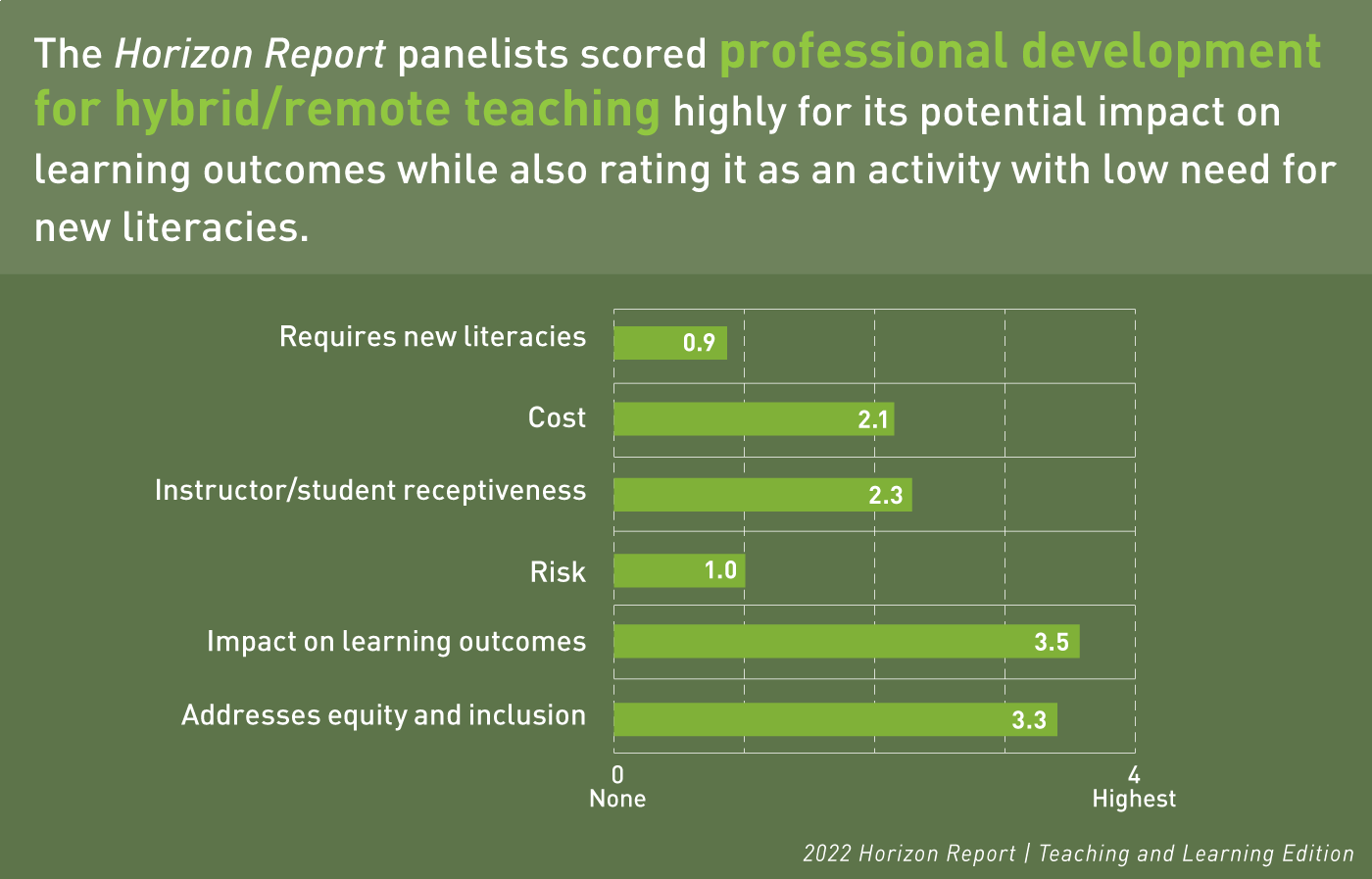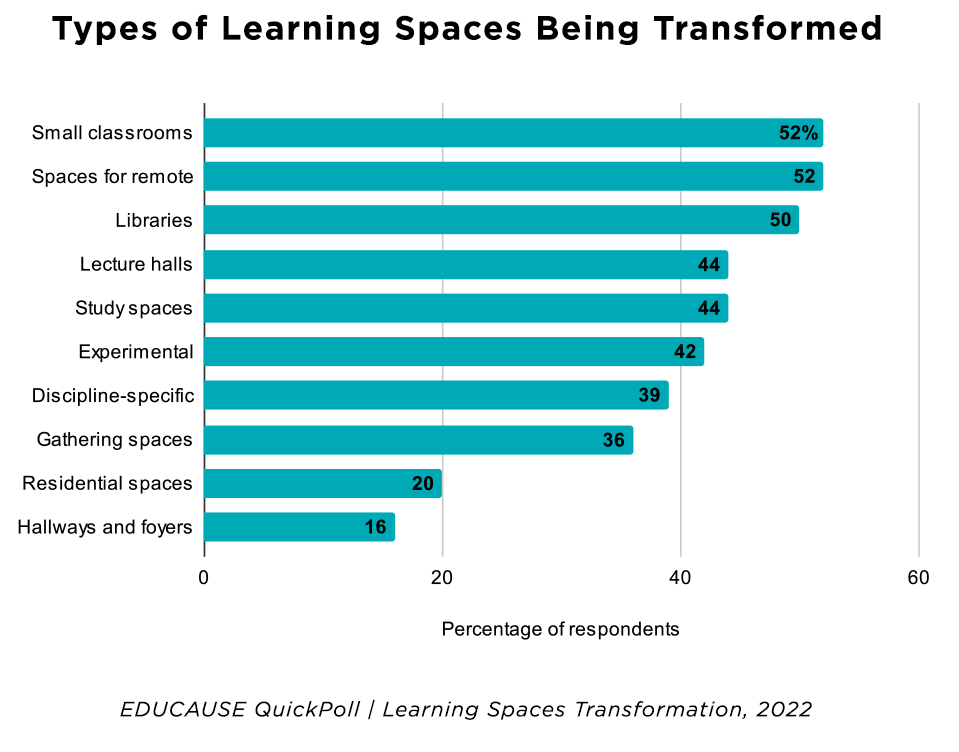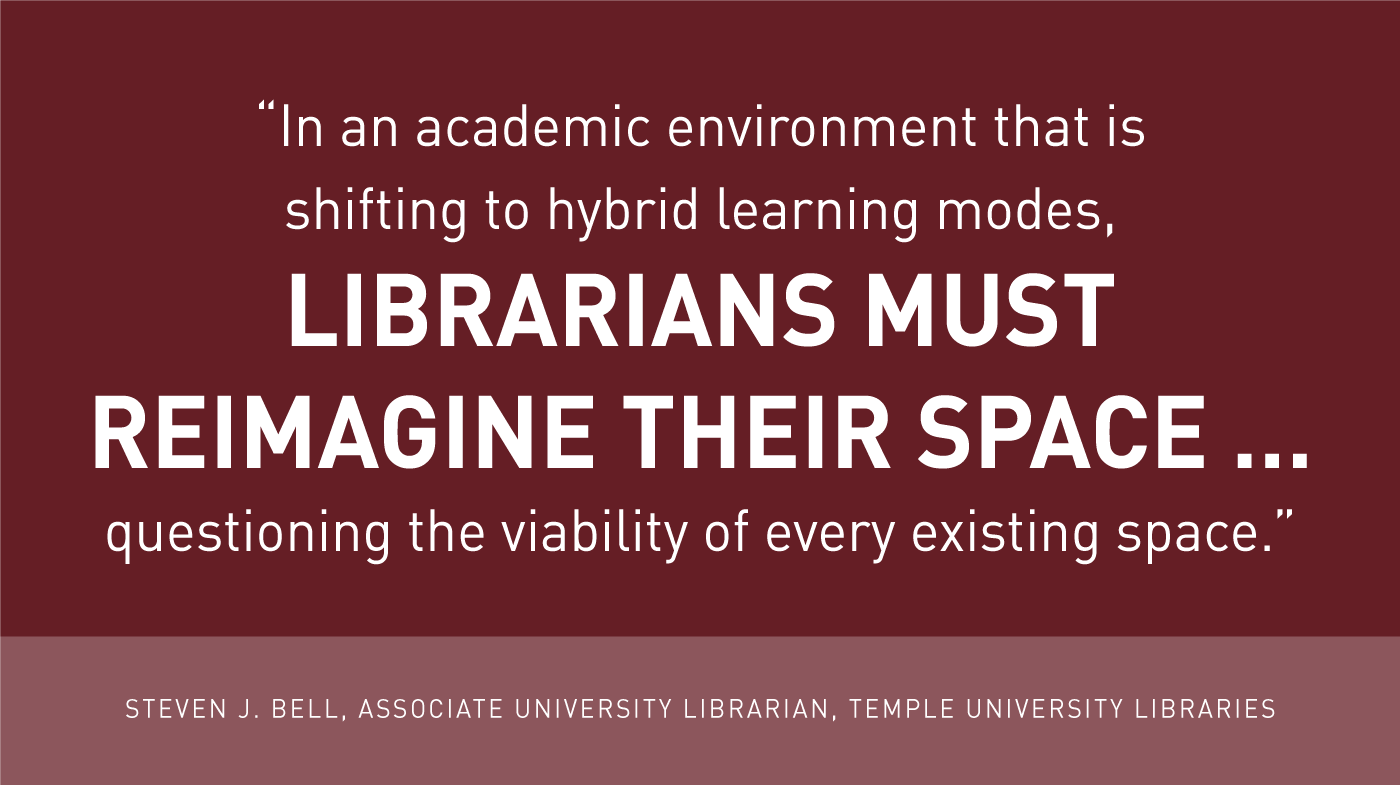The Digital versus Brick-and-Mortar Balancing Game
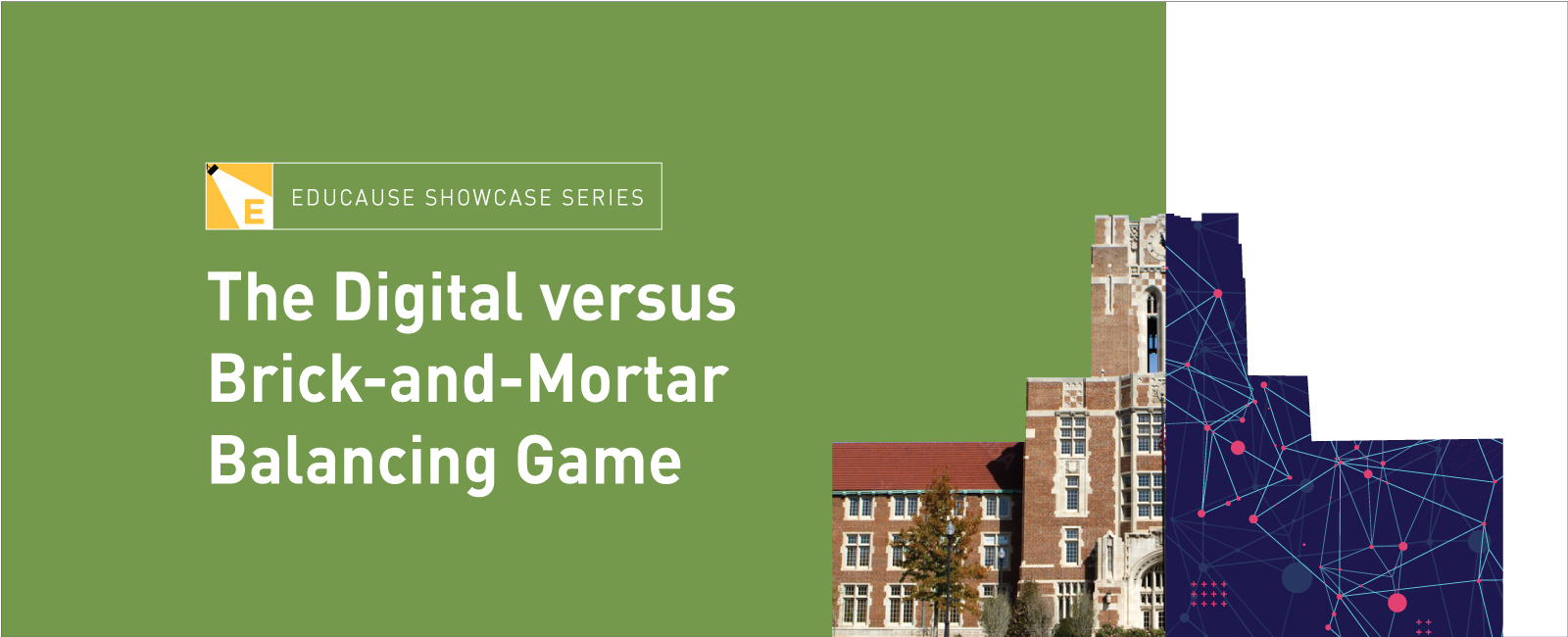
The blended campus required after two years of upheaval calls for out-of-the box thinking about what to keep and what to discard from both digital and physical work and learning spaces. Technology leaders face critical decisions regarding workplace culture, physical classroom design, and traditional campus spaces.
Culture Eats Technology for Breakfast
EDUCAUSE Horizon Report | Teaching and Learning Edition
As students’ expectations and needs have shifted, campus leaders realize the imperative to expand hybrid courses. Successfully navigating this transition requires technology adjustments, yes, but also cultural changes regarding remote work, skills-based learning, cybersecurity, sustainability goals, and degree value.
(Some) Classroom Walls Crumble
Making the move from fully in-person instruction to a learning environment that also accommodates remote students (and remote faculty) requires rethinking and redesigning physical learning spaces to provide an equitable experience for all learners. Technology leaders will need to overcome sizable obstacles to create inclusive classrooms that enable faculty and students to reap the many benefits of hybrid learning.
Space Becomes a Commodity
In a world of hybrid, virtual-and-physical learning, space itself becomes a service. For example, academic library leaders have an opportunity to reimagine traditional campus spaces, including desktop computer labs, to create environments that will be flexible enough to provide what students need now.
Read "Moving to Mobile: Space as a Service in the Academic Library"
Hear from the Community
Member QuickTalk | Showcase Coffee Shop
Missed the Member QuickTalk | Showcase Coffee Shop: The Digital versus Brick-and-Mortar Balancing Game? Access the recording to hear from institutional leaders as they explore digital and physical work and learning spaces. And don't forget to view the sequel!
Go Further
Assess Your Progress
Learn from Your Peers
- Learning Lab: How to Create and Teach Engaging, Equitable, and Inclusive Online Classes
- Learning Lab: Leading XR Initiatives: Addressing Privacy, Security, and Ethics
- Institute: Digital Learning Innovators Institute
- Institute: Digital Learning Leaders Institute
Feed Your Curiosity
- Staying Relevant: The Importance of Incorporating HyFlex Learning into Higher Education Strategy EDUCAUSE Review
- Scaling HyFlex for the Post-Pandemic Campus EDUCAUSE Review
- 7 Things You Should Know About the HyFlex Course Model
- EDUCAUSE QuickPoll Results: The Workforce Shakeup EDUCAUSE Review
Dig Into the Library
Interact with the Community
- Community Group: Learning Space Design
- Community Group: Blended and Online Learning
- Community Group: Instructional Design
- Community Group: Instructional Technologies
From this Showcase, we hope you'll take away a new understanding of how digital and physical work and learning spaces can be optimized at your institution.
Next up, we'll explore the state of artificial intelligence in higher education. Tune in to AI: Where Are We Now? launching June 6.
